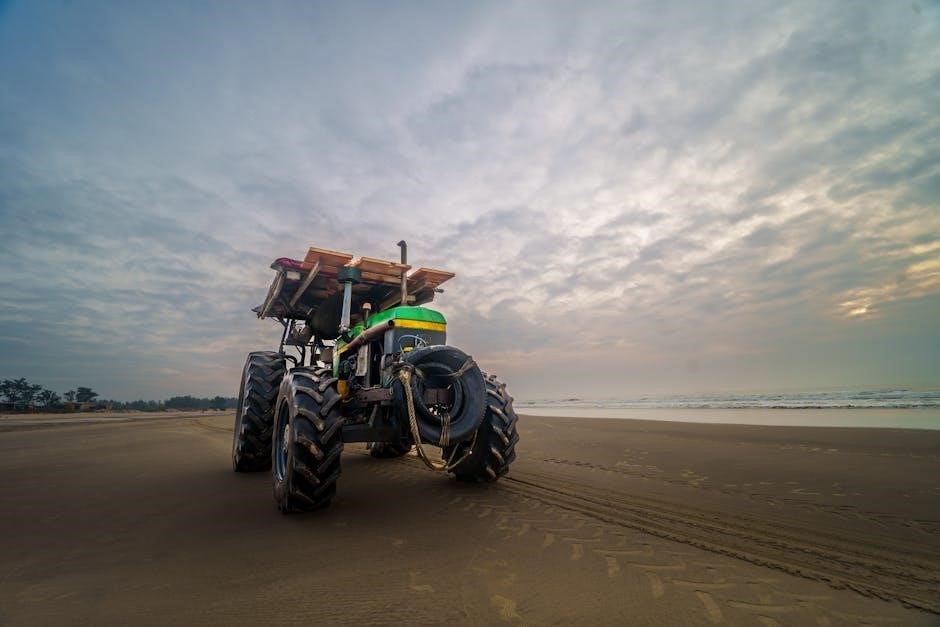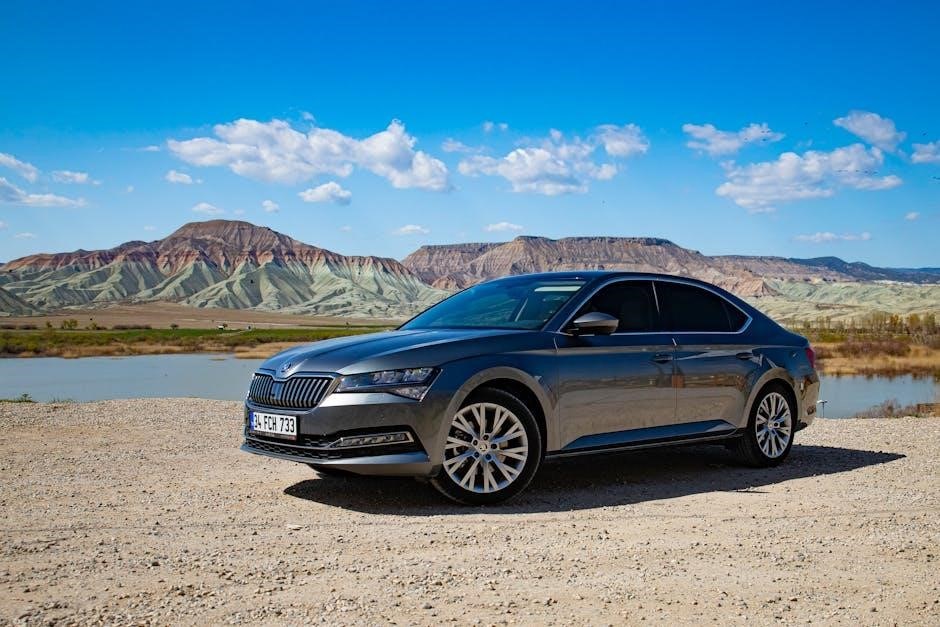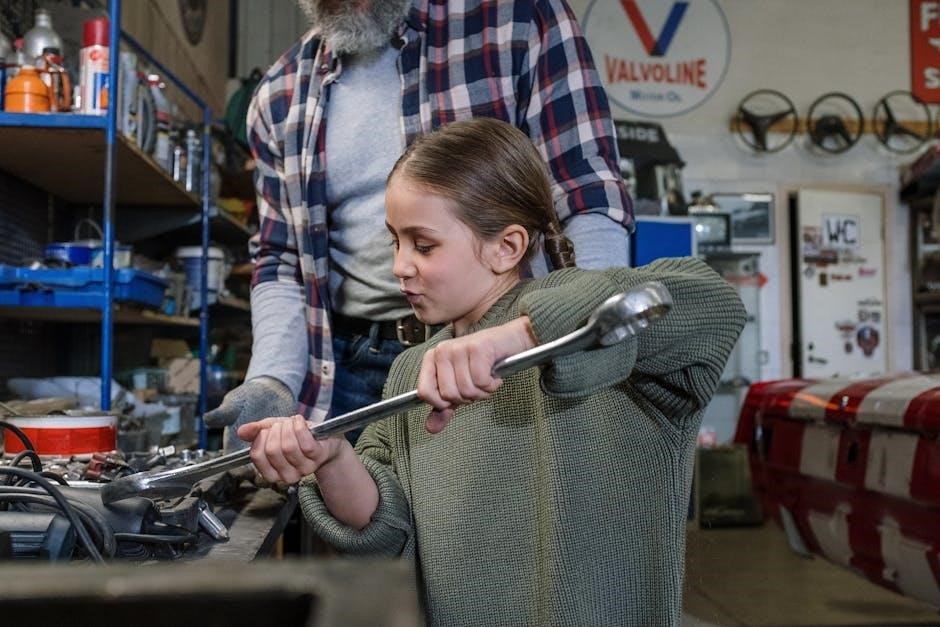Remote start systems are growing in popularity, but questions remain about their compatibility with manual transmission cars․ This article explores the possibilities, challenges, and solutions surrounding this topic․
What is Remote Start?
Remote start, also known as remote engine start, allows drivers to start their car’s engine from a distance using a key fob or smartphone app․ This feature provides convenience, enabling pre-heating or cooling of the vehicle before entry․ It is often paired with security systems and can improve engine performance by allowing it to warm up properly․ Remote start systems are increasingly popular and are available as both factory-installed and aftermarket solutions for many vehicles․
Why Remote Start is Popular
Remote start systems have gained popularity due to their convenience and comfort․ They allow drivers to start their car’s engine from a distance, ensuring the vehicle is at a comfortable temperature before entry․ This feature is especially appealing in extreme weather conditions, such as cold winters or hot summers․ Additionally, remote start systems often come with enhanced security features, providing peace of mind to car owners․ Their widespread adoption reflects their practical benefits and ease of use for daily commuting and errands․

Can a Manual Car Have Remote Start?
A manual car can have a remote start system, but it requires specific safety features to ensure the car does not move unintentionally when started remotely․
Yes, It is Possible
Installing a remote start in a manual car is possible with specific modifications․ The car must be in neutral gear, and clutch pedal sensors are often required to ensure safety․ Brands like Compustar offer systems designed for manual transmissions, allowing remote start functionality; However, professional installation is recommended to avoid complications and ensure proper operation․ This setup prevents accidental movement and maintains security while providing the convenience of remote starting․
No, It is Not Recommended
While remote start installation in manual cars is technically possible, it is often discouraged due to safety and logistical challenges․ Leaving a manual car in neutral with the engine running poses risks, such as accidental movement or theft․ Additionally, manufacturers and installers typically avoid supporting this setup, as it requires specialized sensors and modifications․ The added complexity and potential risks make it less practical compared to automatic vehicles, leading many experts to advise against remote start systems for manual cars․

Understanding Manual Transmission and Remote Start Compatibility
Manual transmissions require driver interaction with the clutch and gearshift, making remote start integration more complex than with automatic vehicles due to mechanical differences;
How Manual Transmissions Work
A manual transmission requires the driver to actively engage and disengage the clutch pedal while using the gearshift to select the appropriate gear․ This mechanical process allows the driver to control the vehicle’s speed and torque by manually changing gears․ The clutch pedal disconnects the engine from the transmission, enabling smooth gear transitions․ Proper operation relies on the driver’s coordination and understanding of when to press the clutch and move the gearshift into the desired gear․
Challenges with Remote Start in Manual Cars
Manual cars present unique challenges for remote start systems due to the need for driver interaction with the clutch and gearshift․ Remote start requires the vehicle to be in neutral gear, but manual cars typically remain in gear when parked, posing a potential safety hazard if the car were to roll․ Additionally, engaging the ignition without the driver present can lead to unintended movement or engine damage, making remote start installation more complex and risky compared to automatic vehicles․

Technical Requirements for Remote Start in Manual Cars
Manual cars require the vehicle to be in neutral gear for remote start functionality, often necessitating clutch pedal sensors and additional safety mechanisms to ensure proper operation;
Neutral Gear Requirement
For a manual car to support remote start, it must be in neutral gear to ensure safety and prevent accidental movement․ This requirement is non-negotiable, as starting the engine in gear could lead to unintended consequences․ Modern remote start systems often include mechanisms to automatically shift into neutral or verify the gear position before ignition․ This safety protocol is crucial for compatibility and proper functionality in manual transmission vehicles․
Clutch Pedal Sensors
Clutch pedal sensors are essential for remote start in manual cars, ensuring the clutch is pressed before ignition․ This prevents accidental movement, as the engine won’t start unless the clutch is engaged․ These sensors monitor the pedal’s position and communicate with the system, adding a critical safety layer․ Without them, remote starting a manual car could be dangerous․ They ensure the vehicle remains stationary, enhancing overall security and functionality․
Additional Safety Features
Additional safety features for remote start in manual cars include automatic shutdown if the clutch isn’t pressed or the car isn’t in neutral․ Some systems also monitor the vehicle’s surroundings, ensuring it doesn’t move unintentionally․ These features prevent accidents and theft, providing peace of mind․ They work alongside existing safety mechanisms to maintain security and control, making remote start a viable option for manual transmissions when properly equipped․

Installation Considerations
Installing a remote start in a manual car requires professional expertise to ensure safety and compatibility, as improper setup can lead to operational issues and security risks․
Professional Installation vs․ DIY
Professional installation is highly recommended for remote start systems in manual cars due to complex requirements like clutch pedal sensors and neutral gear verification․ DIY attempts often fail to address these, leading to safety hazards․ Professionals ensure proper integration with existing systems, minimizing risks and ensuring reliability․ While DIY might seem cost-effective, the potential for errors makes it impractical․ Trusting a certified technician guarantees a seamless and secure setup tailored to your vehicle’s specific needs․
Cost of Installation
The cost of installing a remote start system in a manual car varies, typically ranging from $200 to $700, depending on the system’s complexity and brand․ High-end systems with advanced features like smartphone integration may cost more, while basic models are more affordable․ Additional fees for components like clutch sensors or bypass modules can increase the total price․ Professional installation fees also apply, ensuring proper setup and safety․ Always consult a certified installer for accurate pricing tailored to your vehicle․
Brands That Support Manual Transmissions
Compustar is one of the few brands offering remote start systems compatible with manual transmissions․ They provide advanced solutions with features like neutral gear detection and clutch pedal sensors, ensuring safe operation․ Other brands, such as Viper and Avital, also offer limited compatibility, but installation requires professional expertise to integrate with manual vehicles․ Always check with manufacturers for specific models and compatibility before purchasing, as not all systems are universally adaptable to manual cars․

Built-In vs․ Aftermarket Remote Start Systems
Built-in systems are rare for manual cars, while aftermarket solutions like Compustar offer compatibility with specific safety features, requiring professional installation and neutral gear detection․
Built-In Remote Start Systems
Built-in remote start systems are typically designed for automatic vehicles, with few manufacturers offering them for manual cars․ These systems integrate seamlessly with the car’s electronics, offering features like keyless entry and engine preheating․ However, they often lack the necessary safety mechanisms for manual transmissions, such as clutch pedal sensors, making them less practical for stick-shift cars․ Additionally, installing built-in systems on manual cars usually requires customization, which can be costly and complex․ As a result, aftermarket solutions remain the preferred choice for manual car owners seeking remote start functionality․ These systems are generally more adaptable and come equipped with the necessary safety features to ensure proper operation in manual vehicles․
Aftermarket Remote Start Systems
Aftermarket remote start systems offer flexibility for manual cars, as they can be installed on vehicles lacking factory support․ These systems often include features like neutral gear detection and clutch pedal sensors to ensure safe operation․ Brands like Compustar specialize in manual transmission compatibility, providing tailored solutions․ While installation requires careful setup, aftermarket systems make remote start accessible for many manual car owners, offering convenience without compromising safety․ Professional installation is recommended to avoid potential issues․

Common Misconceptions
A common myth is that remote start systems are exclusive to automatic cars․ While manual cars present unique challenges, modern solutions make remote start possible with proper installation and safety features․
Myth: Remote Start is Only for Automatic Cars
A common misconception is that remote start systems are exclusively for automatic cars․ While they are more straightforward to install in automatics, manual cars can also be equipped with remote start․ Modern solutions, such as neutral gear sensors and clutch pedal monitoring, address the unique challenges of manual transmissions․ With proper installation and safety features, manual car owners can enjoy the convenience of remote start without compromising functionality or safety․
Myth: Manual Cars Cannot Be Equipped with Remote Start
Contrary to popular belief, manual cars can be equipped with remote start systems․ While some manufacturers and installers avoid manual transmissions due to safety concerns, aftermarket solutions like Compustar offer compatible systems․ These systems require the car to be in neutral and often include additional safety features, such as clutch pedal sensors, to ensure safe operation․ Proper installation by a professional is crucial to maintain functionality and safety, making remote start a viable option for manual car owners․

Benefits of Remote Start in Manual Cars
Remote start offers convenience, allowing drivers to start their manual car from a distance, warming the engine and preparing the vehicle for operation․ It enhances comfort and security․
Convenience
Remote start systems offer unparalleled convenience for manual car owners․ Drivers can start their vehicle from a distance, ensuring the engine is warmed up and ready to go․ This feature is especially beneficial in extreme weather conditions, eliminating the need to brave the cold or heat․ Additionally, it streamlines the process of getting into a comfortable, pre-conditioned car, making daily commutes more enjoyable and stress-free․ This level of ease is a significant advantage for those who value efficiency and comfort in their driving experience․
Engine Warm-Up
Remote start systems allow manual car owners to warm up their engine before driving․ This feature is particularly useful in cold climates, as it ensures the engine oil is properly circulated and the vehicle is ready for operation․ A warmed-up engine improves fuel efficiency, reduces wear and tear on internal components, and provides a smoother driving experience․ By enabling the engine to reach optimal temperature remotely, drivers can enjoy enhanced performance and reliability, making this a practical benefit for daily use․
Additional Security Features
Remote start systems for manual cars often include enhanced security features like alarm systems, immobilizers, and theft-deterrent alerts․ These features ensure the vehicle remains secure while parked and running remotely․ Some systems monitor the car’s status and send notifications if unauthorized access or movement is detected; This adds an extra layer of protection against theft and tampering․ By integrating these security measures, remote start systems provide peace of mind for manual car owners, ensuring their vehicle stays safe and secure at all times․

Drawbacks and Risks
Remote start systems in manual cars pose risks like potential security breaches, unauthorized access, and mechanical issues if not properly installed or maintained․
Potential Security Risks
Remote start systems in manual cars can pose security risks, such as unauthorized access or hacking, if the system lacks proper encryption or secure authentication․ Additionally, improper installation can leave vulnerabilities, allowing thieves to bypass the system and steal the vehicle․ While modern systems often include advanced security features, the risk remains, especially in manual transmissions where additional components like clutch sensors are involved․ Ensuring professional installation and using high-quality, encrypted systems can mitigate these risks effectively․
Clutch and Gearshift Issues
Manual cars with remote start systems face unique challenges related to clutch and gearshift operation․ Since remote start requires the car to be in neutral, improper use can lead to mechanical stress or unexpected movement․ Drivers must ensure the vehicle is securely in neutral and apply the parking brake to prevent rolling; Additionally, aftermarket systems may require clutch pedal sensors or bypass modules to function safely․ Improper installation or malfunction of these components can result in erratic behavior, making professional expertise crucial for reliable operation․
Increased Maintenance
Installing a remote start system in a manual car can lead to increased maintenance needs․ The frequent use of the system may cause wear on the starter motor and battery․ Additionally, the clutch pedal sensors and bypass modules required for operation can malfunction over time, necessitating regular checks․ Drivers must also ensure the car remains in neutral and the parking brake is engaged, as failure to do so can result in mechanical stress or unexpected movement, further complicating maintenance requirements․

Future of Remote Start in Manual Cars
Advancements in technology are expected to enhance remote start compatibility for manual cars, with manufacturers potentially integrating specialized features to address current challenges and improve functionality․
Advancements in Technology
Recent technological advancements have made remote start systems more compatible with manual cars․ Systems now include features like neutral gear detection and clutch pedal sensors, ensuring safe operation․ Brands like Compustar offer solutions tailored for manual transmissions, addressing past limitations․ These innovations enhance convenience and safety, making remote start more accessible for manual car owners while maintaining reliability and performance․ As technology evolves, we can expect even more seamless integration and advanced features for manual vehicles․
Manufacturer Support
While most manufacturers don’t offer built-in remote start for manual cars, some aftermarket brands like Compustar provide compatible solutions․ These systems ensure safety by requiring the car to be in neutral and incorporating clutch pedal sensors․ As technology advances, more manufacturers may offer support for manual transmissions, expanding remote start accessibility․ This growing demand highlights the potential for future integration of remote start in manual vehicles, driven by consumer interest and innovative solutions․
Remote start systems are possible for manual cars with proper installation and safety features․ Modern solutions address challenges, making remote start a viable option for manual vehicles․
Should You Consider Remote Start for Your Manual Car?
Remote starts offer convenience, especially in extreme weather․ For manual cars, ensure the vehicle is in neutral and consider safety features like clutch sensors․ Brands like Compustar support manual transmissions, but installation complexity and costs vary; Professional installation is recommended for reliability and safety․ Weigh the benefits of convenience against potential security risks, additional maintenance, and the need for consistent use of neutral gear․ Consult a professional to determine if it suits your vehicle and needs․
Final Thoughts
Remote start systems can enhance convenience for manual car owners, but careful consideration is essential․ Ensure proper installation, safety features, and compatibility with your vehicle․ While the benefits of convenience and engine warm-up are appealing, weigh them against potential security risks and mechanical strain․ Always consult a professional to determine the best solution for your car, ensuring reliability and safety․ With the right setup, remote start can be a practical addition to your manual transmission vehicle․

